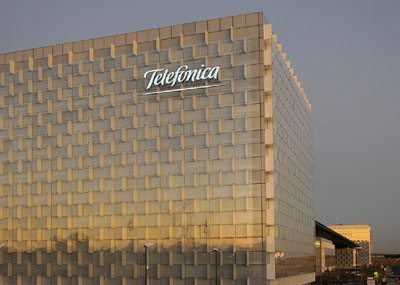Telefónica, Brocade show NFV speed
The move toward virtualizing network functions continues to gain momentum as wireless operators look for ways to cut expenses, increase agility in service offerings and remain competitive against over-the-top services. The latest push comes from Spain-based telecom giant Telefónica, which announced results from a partnership with Brocade that the two companies boldly claim “provided clear evidence that will fundamentally alter the performance range service providers can expect from virtualized, software-based networking infrastructure.”
The partnership included setting up network function virtualization “benchmarks” within Telefónica’s NFV Reference Lab framework. Through that partnership, Telefónica claims tests using Brocade’s Vyatta 5600 VRouter hit data speeds of 80 gigabits per second using an “off-the-shelf” Intel-based x86 server. The use of off-the-shelf products is a central theme of NFV implementation as it will allow operators to tap into generic hardware components at reduced costs, with the software running through those systems providing the network performance benefit.
Telefónica noted the results proved that NFV deployments would be capable of meeting speed requirements necessary for operators to meet performance targets.
“The promise of NFV is rapid service creation and highly elastic scalability,” said Enrique Algaba, network innovation and virtualization director at Telefónica. “While virtualization is significant to achieving this agility, it has historically been the fundamental limiter to the kind of performance required for scalability.”
“These results are allowing us, as network operators, to aggressively change our perspective regarding what is possible with software-driven networking in order to accelerate the adoption and deployment of these revolutionary technologies,” added Francisco-Javier Ramón, head of Telefónica NFV Reference Lab.
Telefónica earlier this year unveiled its UNICA initiative that is designed to provide the framework for the company’s global end-to-end virtualization deployment and expansion plans for its network infrastructure. UNICA was set up as a new architecture for infrastructure teams where physical resources become virtual and are provisioned as such. The carrier said it has been actively involved in debates with open communities and standards bodies such as SDN, Openflow and OpenStack to improve existing solutions, and it is also working on proof-of-concepts with other industry players including Hewlett Packard, Nokia Networks, Ericsson, Broadsoft, Cisco, Intel and Juniper to define best uses for the new technologies.
Telefónica earlier this year also signed a deal with Alcatel Lucent to use the vendor’s CloudBand NFV platform to identify and develop process models designed to help service providers decide which elements within the network should be virtualized and when.
Ovum noted at the time that it expects by 2016 that just 30% of Telefonica’s new infrastructure will be virtualized.
For Brocade, the partnership with Telefónica builds on success it’s seeing across the enterprise space, with Infonetics Research recently citing the company in a tightly packed bunch of vendors including Avaya, HP and Juniper as being behind market leader Cisco Systems in terms of market share of global revenues. As part of that report, Infonetics claimed worldwide sales of telecom and “datacom” equipment and software would hit $1 trillion in sales to service providers and enterprises between 2014 and 2018. That growth is set to be led by the Asia-Pacific region, with Infonetics forecasting 6% year-over-year growth in that region, compared with an expected 4.5% year-over-year growth for North America.
Bored? Why not follow me on Twitter?

